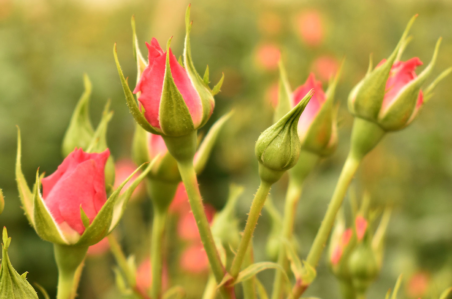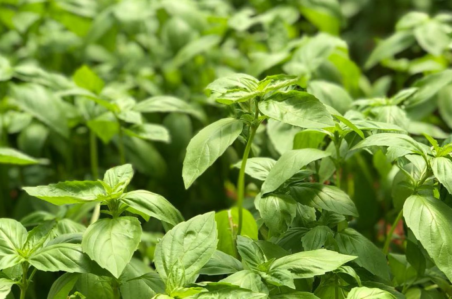Growers
Kenya is facing stiff competition in the EU and UK market from the US, Israel, South Africa, Columbia, and Mexico. Large exporters and growers are replacing the traditional smallholder operations that have supplied export markets.
Requirements on traceability and process standards are placing new burdens on exporters and causing further barriers to smallholder participation. There has been a trend toward increased processing, packing, and product variety further limiting smallholder opportunities.
Exporters
As more farmers delve into modern farming, their produce is attracting huge demand locally and internationally. But to exporters, especially horticultural, knowing the right documentation to allow the produce to at the exit point and also be accepted in the importing country is a tall order.
Data from a World Bank report indicate that over 30 percent of individual exporters struggle with the right documentation. We highlight the export requirements for cut flowers, fruits and vegetables in Kenya. Click here for details on Export requirements for Horticulture products.


Maximum Residue Limit (MRL) compliance certificate for those exporting to EU markets ensures that farmers are abiding to the right pesticides and herbicides application when they are growing their produce.
Private standards in EU, non-EU and other countries like USA, Japan, and Middle East keep on changing with time, and therefore, individual markets may have additional private standard requirements. They show that exporting farmer has engaged in Good Agricultural Practices that ensures that crops have been grown in safe, healthy and responsible way.
There are various specifications for individual produce to European markets. For example, for French beans the length should be a minimum 8 cm and maximum 10 cm with a diameter of between 4 mm and 6 mm. The colour should be mid to dark green with a pest and disease tolerance of 0-5 percent rust and 0-5 percent anthracnose. However, most supermarkets demand totally blemish-free beans.
Packaging
For mangoes, the packing should be in the range of eight to 16 pieces with a maximum of 4 kgs per box. They should also be free from latex contamination, no physical insect pest and disease infestation, free from bruises and other mechanical damages. The fruits should be shiny and freshly looking with 5 mm of stalk attached to control pathogen infestation through that point. The fruits are given sizes according to the number of fruits per carton for example 8, 9 10, etc. Grading can be done either manually or by use of the machine.
Avocado should be packed in sizes of 10 to 18 pieces with a maximum of 4 kg per box. Fruits should be uniform in size, at most 5 mm stalk attached to the fruit, wax polish to prevent desiccation and dehydration. This can either be done manually or by machine. Grading can also be done the same way.
Passion fruits are packed in 48 pieces of 2 kg box. Fruits should be uniformly sized with no physical bruises on the skin of the fruits. There should be no disease or pest infestation on the fruits. They should be uniformly yellow in color, fine, crisp, free from dehydration with a high pitch when tapped. The length should be 450-75 mm and a diameter of 200-350 mm.
The export package should contain shipper name and address, product and quantity, Class, Country of origin, Recyclable symbols, and the green dot where they apply
The major cause of shipment interceptions in the EU include non-compliance with regulations, presence of harmful organisms in consignment, pesticide residues above the acceptable limits in and/or on produce or inappropriate documentation.
Major threats to horticultural produce for exports include Fall Army Worm, False Codling Moth, Bollworms, Leaf miner, White flies, fruit flies, thrips and Spider mites
Horticultural Exports include:
Cut flowers and ornamentals
This is by far the most important component constituting over 70% by value of total fresh horticultural exports in 2020. Kenya exports over 65% of its cut flowers to the Netherlands while the rest are exported directly to wholesalers and retail outlets such as supermarkets and grocers as well as other retail intermediaries mainly in Europe especially UK.
Major cut flower and ornamentals exports from Kenya include roses, Carthamus, cuttings, cut-foliage, carnations, statice, alstroemeria, etc.
Vegetables
This is the second most important product group within the horticultural industry, which by volume contributes to about 35% of total fresh produce exports. The main product is the French (green) beans. However, the importance of other vegetables for export such as sugar snaps, snow peas and runner beans have increased. Other vegetables for export include the Asian vegetables such as Okra, Karela, dudhi, chilli and aurbergine.
Fresh Fruits
This is the third category of the fresh horticultural exports from Kenya. Fruit exports have been growing slowly but steadily. Major fruit export products include avocadoes, mangoes, pineapples, passion fruits, bananas, and strawberry.
Processed horticultural Products
Exports of value-added horticultural exports have been on the increase. This is as a result of increasing demand for natural foods as health consciousness increases among the consumers both in Kenya and the region. The main products under this category include canned pineapples, juices of mangoes, passion fruits and pineapples, canned vegetables, pickles, pastes, jams, jellies, marmalades and preserves.
The export destination for the processed horticultural products is the regional market and the EU for pineapples and passion fruits. Great opportunities exist in canning, freezing and drying (sun) and/or roasting. Another area in value addition that has seen significant growth is the pre-packs (consumer packs) for fresh produce meant for supermarkets.
Herbs and Spices
Due to increased health awareness by consumers worldwide, consumption of herbs and spices has increased. Kenya has been exporting herbs and spices for decades and the demand for these products is bound to increase. The types of herbs exported from Kenya include lemon grass, basil, dill, sweet Marjaram, oregano, parsley, rosemary, thyme, sage, chamomile, tarragon, etc. On the other hand, exports of spices include garlic, ginger, coriander, chilies, paprika, turmeric and cumin.

